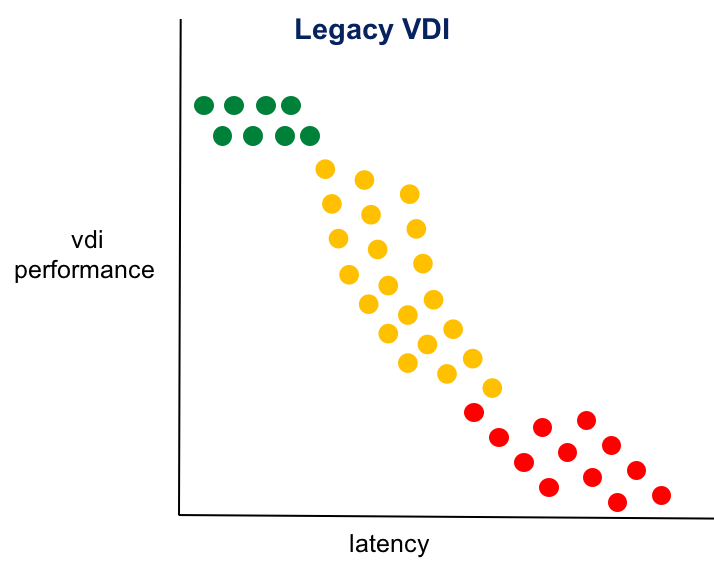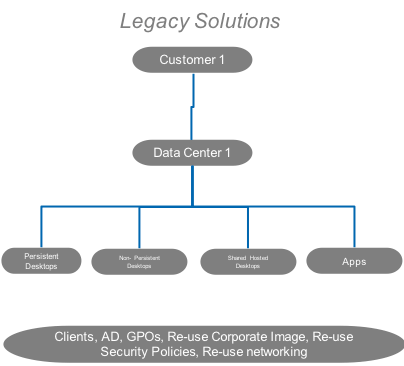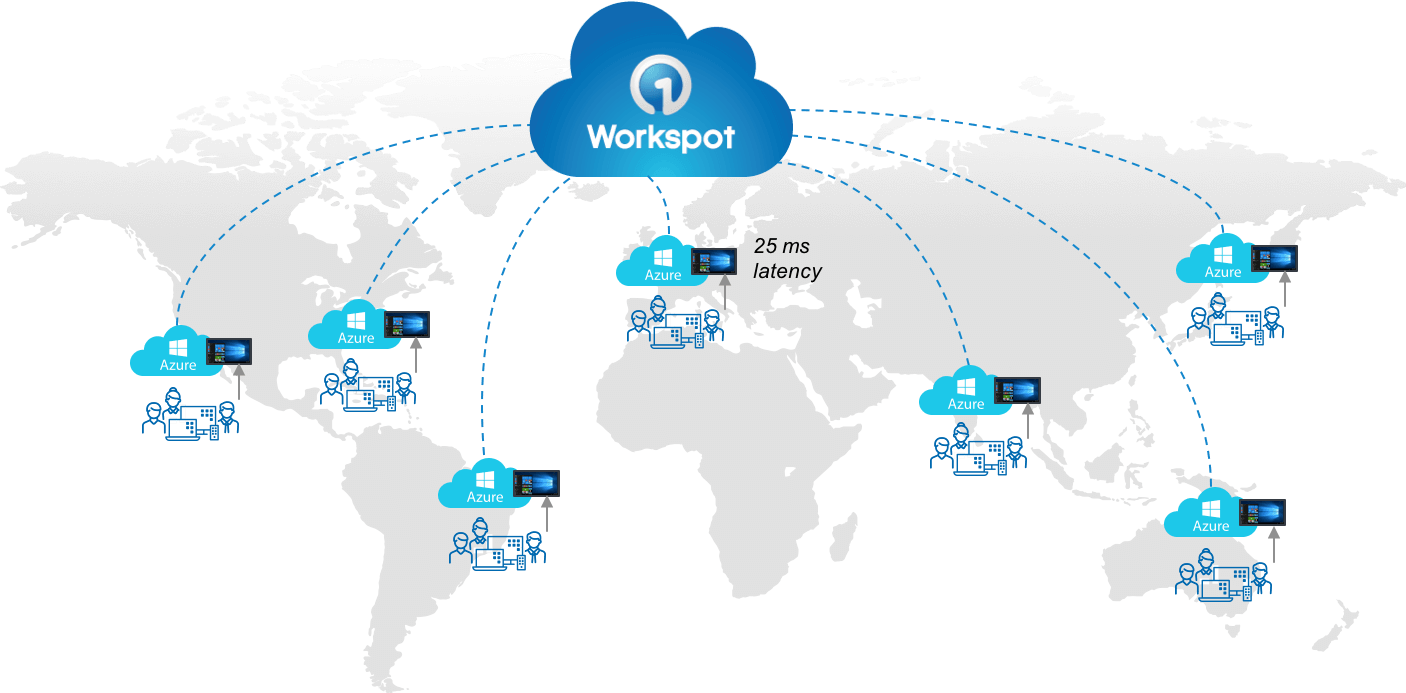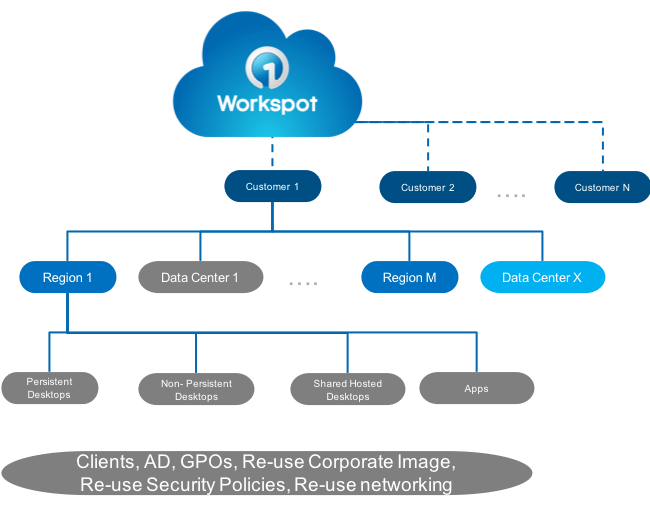For a very long time – really since the beginning of VDI and virtual apps – we have been thinking about VDI scalability all wrong. In the yesteryear of VDI, when we talked about scalability, we were referring to the scalability of the VDI broker for a single site. In the age of the cloud, everything has changed, and now VDI scalability is about the number of cloud regions for each tenant.
Legacy VDI is optimized for a single site with 5,000 users
Legacy VDI has been all about infrastructure. Customers had to buy expensive servers, storage, and networking, hire consultants and set up a complex stack on-premises to be able to deliver virtual desktops to end users. The old way looks like this: Many variables to contend with and lots of money spent doing it.

In legacy VDI deployments, all the focus was on the scalability of the broker at a single site. How many users/desktops can the broker handle? What happens if you need more? Back in the day, if you exceeded the user limitation for the broker, you would then create a “pod” architecture, and you just kept adding “pods” to accommodate the number of desktops you needed.

If the customer wanted to have multiple sites, they had to replicate this infrastructure to create the second site, yet the two sites were completely separate. Each had its own management stacks and they were completely independent implementations.
In a legacy VDI deployment, customers would typically choose one or two large sites and long-haul every user back to one of the sites. As an example, one site might be in North America and the other in London. All users worldwide would be connected back to one of those sites. And that’s when any performance issues you were already experiencing just got worse. The culprit, of course, is latency.
Desktop Cloud is optimized for thousands of sites with millions of users
Multiple “pods” and complex management of independent VDI implementations use to be acceptable; it was the only way to get it done at the time. But in the age of the public cloud, that model doesn’t make sense anymore, because you have the opportunity to take advantage of the awesome power of the cloud! Do you realize that you already have tens of data centers at your fingertips – ready to work for you with just a few clicks? Now you can deploy virtual desktops anywhere in the world! And it’s just as easy to create ten sites as it is to create one. You just spin up Windows 10 virtual desktops on any Microsoft Azure region in minutes and manage all your desktops, across as many regions as you need, from a single pane of glass. The ready availability of all that cloud compute power in 50+ Azure regions means you can deploy virtual desktops close to your users so latency is minimal – usually less than 50ms – and that means fast performance. If the user is in Hong Kong, deploy their virtual desktop in the Hong Kong Azure region. If the user is in India, deploy their desktop in India. If the user is in London, deploy their desktop in the UK. You get the picture, but here it is for good measure:

Bye bye oppressive latency, hello productivity! Now with a cloud architecture, we all understand the importance of multi-tenancy. What is unique about our desktop cloud is its multi-region capabilities. In the age of the public cloud, we believe that the scalability of the solution should be measured in terms of the number of regions it can support – each with 10s, 100s or millions of users!

Workspot is a multi-tenant solution, so it can handle tens of thousands of customers. But it also enables every customer to deploy across multiple regions (and on-prem data centers too if that’s what you need to do) and manage everything from a single pane of glass. And in each region, the customer could deploy virtual apps and desktops to thousands of users. In a separate blog I talk about the New Math of VDI Performance; here is The New Math of VDI Scalability: #customers * #regions * #users per region. A single VDI control plane now needs to handle 1000 customers * 5 regions * 1000 users = 5 million users.
Key enabling technologies
These are the technology attributes that make Workspot vastly different from the competition, and they are solution attributes you should look for during your evaluation:
(1) Scalable architecture that supports millions of users on a single control plane – Workspot’s platform is built using micro-services, similar to Linkedin and other large, online consumer sites.
(2) The control plane is multi-tenant, like any cloud-native product.
(3) The control plane supports multiple regions for each customer. The key architectural change here is to separate the data from the control plane.
(4) Everything should be managed through a single pane of glass for simplicity.
Putting customers first
The technology differentiators are important, but equally important for your success with a virtual desktop implementation is the commitment your vendor makes to you. At Workspot, we are relentlessly focused on making sure your Desktop Cloud implementation meets your requirements. Our success program includes dedicated technical and account managers, free deployment services, flat-rate pricing that includes Azure costs for your virtual desktops, and performance that is usually better than a physical PC! If our innovative technology and absolute commitment to your success sounds interesting, we’d like to have a chance to show you how we can deploy your desktops in a day!
Find more about our absolute commitment to your success!
Compare Virtual Desktop Solutions Blog




